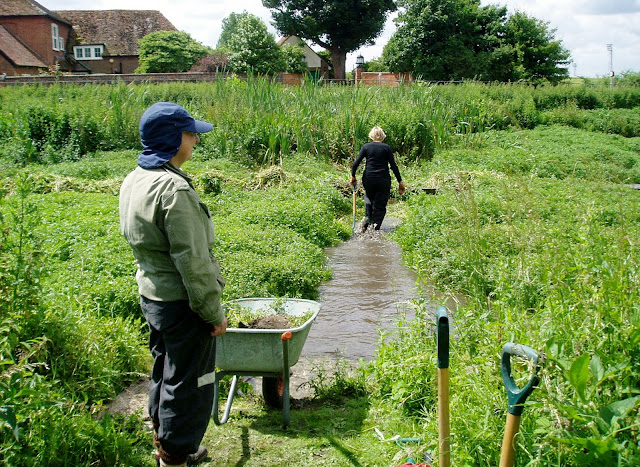By C:
In a week of one ‘shock’ news-report after
another, the only ‘shock’ at Wallingford Green Gym was this message, sent by the
session leader in advance:
Just 10 signed up for tomorrow so we may have too much cake. Oh dear!
Opinion may vary as to
whether England’s Big Fail vs Iceland was in any way a surprise. It certainly wasn’t in my house: ever since
one Green-Gymmer, before the Euro 2016 tournament began, had talked about the format
being expanded to include “minnows such as Iceland”, I have been rooting
for the men in ice-blue – if not with quite the wild abandon of those who may properly call the team by their
nickname, strákarnir okkar (‘our boys’). One German cartoon I saw, showed a commentator
standing in front of an empty football pitch (could equally have been a drawing
of a Shadow-Cabinet meeting?) announcing that England having voted for
Brexit, Iceland had a bye into the next round!
Opinion may also vary as to
whether an over-supply of cake for Green Gym would have been a ‘shock’ in the
sense of a problem. It’s hard work,
working out in the wild! In the event, no
such difficulty arose because on the day there were 13 hungry volunteers to cater
for.
This from the session leader:
Clearing watercress beds and channels is very
like painting this:
As soon
as you finish at one end, you start all over again. Except that they have now used new epoxy
paint on the Forth Bridge and it doesn’t have to be painted again for 30 or so
years. No such luck with watercress.
Last time we were here we had cleared a large
area and piled the sodden cress and mud onto the concrete bunds. Lo and behold it was all still there today,
although much drier:
So our first task was to fork this off the
bunds, into wheel barrows:
This is the downstream team working hard:
And this is their spoil heap:
Being well organised [Ed: not like the England football team] there was, as you will have
observed, a team at either end, working towards each other:
Here are two of the upstream team at work,
but I am nor sure where their spoil ended up.
[Ed: I know the answer to that, because I was the one wheelbarrowing. It went to the compost heap.]
When the bunds were clear …
tea-break was highly
anticipated. Some Green-Gymmers were confused by the “coffee-whistle
bird”: a very loud avian, somewhere nearby, but we couldn’t catch a glimpse of
it, whose call sounded just like the whistle summoning volunteers to refreshments:
The ‘Rocky’ bars were in honour of two of our
stalwart volunteers who bear the name of the saint whose Feast Day it will be
by the time this blog is up (St Peter, birth-name Shim‘on,
nicknamed Kefa, which in Aramaic means ‘The Rock’, and
translates into Latin as Petrus).
Some members who were unable to get to clear
the bunds had already started on more clearing of channels of cress:
cutting/pulling unwanted vegetation – and piling it on to the bunds:
As usual, the stream ran clear – except where there was silt on the bed disturbed by Green-Gymmers’ boots:
Some of us got a glimpse, in passing, of
other sights at the site:
Lots of pollinators making the most of the
sunshine while it lasted. Sadly, the Tortoiseshell butterfly spotted, declined
to pause for a photo opportunity.
Yellow |Rattle (Rhinanthus minor) in
a meadow area where we had in years past placed barriers to discourage people
from walking over species considered desirable. Yellow Rattle is good
from a conservationist’s PoV because it is hemi-parasitic: it stunts the growth
of grass, and so helps a variety of other species to get a look in.
What looks like a dipping-platform under
construction at ‘our’ pond – they’ve taken away some of ‘our’ turf!
So at the end, the bunds were again covered,
ready for another group (or us?) to clear.






















